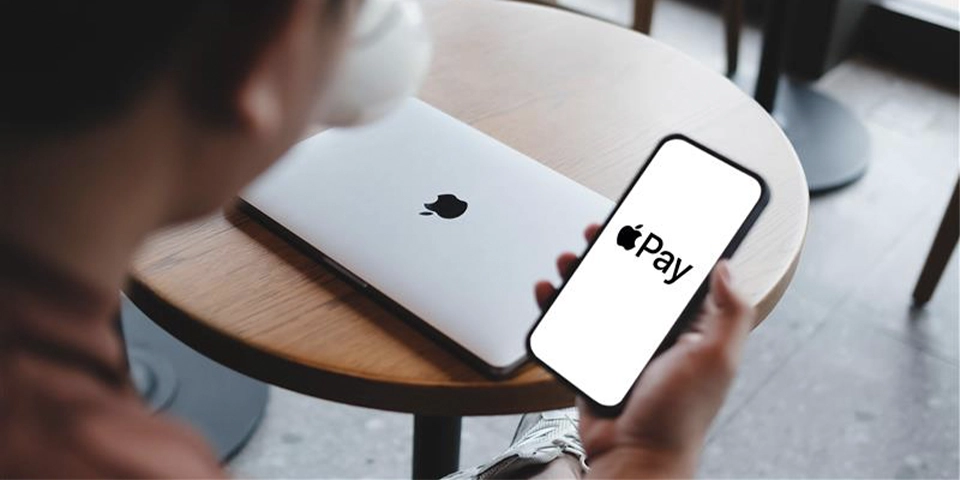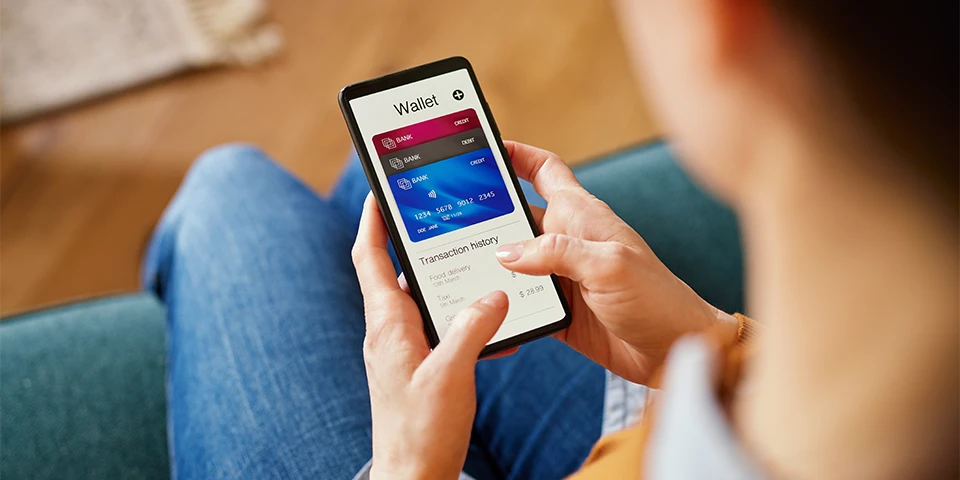One of the most recognised brands in mobile payments, Apple Pay has been an influential player in digital payments, popularising the payment method and offering DACH banks an easy way to offer easy transactions.
What is Apple Pay?
Apple Pay (part of Apple Wallet) is a digital wallet and payment platform that replaces physical cards by storing them securely on iPhones, Apple Watches, and other devices, enabling contactless payments in physical stores and online.
One of the most recognised brands in mobile payments, Apple Pay has been an influential player in digital payments, popularising the payment method and offering DACH banks an easy way to offer easy transactions.

Around 785 million people use Apple Pay around the world - it’s even more popular than Google Pay (over 500 million users). But while it’s popular in many countries, the DACH region is experiencing particularly rapid growth. For example, in Germany, mobile wallet payments are increasing by 13% per year and 43% of German consumers used Apple Pay for in-store payments in December 2024.
| Country | In-store payments using Apple Pay | Online payments using Apple Pay |
| Austria | 52% | 24% |
| Germany | 43% | 18% |
| Switzerland | 39% | 32% |
Usage is broadly in line with other European countries such as France (60% in-store and 23% online), The Netherlands (46% in-store and 26% online) and Spain (32% in-store and 19% online).
In terms of demographic, the typical iPhone and Apple Pay user is young, urban and relatively affluent. There’s a slight female majority, and users are most likely to be Millennials and Gen Z.
Apple Pay is a mobile payment service that allows users to make secure payments in stores, online and within apps using their Apple device (e.g. iPhone, Apple Watch, iPad, Mac). It works anywhere contactless payments are accepted and is compatible with most modern payment terminals.
First, users add their credit or debit card details to their Apple Wallet app. The card is then verified with the issuing bank, and the device securely stores a unique token (Device Account Number) instead of the actual card number.
Apple Pay lets users pay in two simple ways:
Apple Pay uses tokenization to keep the user’s actual bank details private. The card number isn’t shared with the merchant and is instead replaced with a unique token for each transaction. Each payment needs to be authenticated and the card details are stored in a special hardware chip (called a Secure Element) on the device rather than Apple’s servers or the device’s main storage.
Apple Pay is extremely secure. It uses several layers of security to protect users, merchants and card issuers:
However, there are some vulnerabilities and risks to be aware of. Researchers have demonstrated that with Express Travel (Transit) mode enabled, a locked iPhone with a Visa card can be tricked into making unauthorised payments by imitating a public transport terminal. And users still face risks from stolen unlocked phones, weak passcodes and phishing attacks.
For EU banks wanting to offer Apple Pay, the journey begins by becoming an authorised Apple Pay issuer, which means meeting Apple’s strict security and technical criteria - including integrating with Apple’s Token Service Provider (TSP) system that replaces card details with secure digital tokens.
Banks can implement Apple Pay in different ways:
The integration must comply with EU regulatory frameworks like PSD2’s Strong Customer Authentication (SCA) and GDPR. Apple Pay is already built for this, leveraging Face ID, Touch ID, and tokenisation.
Commercially, Apple charges transaction-based fees, but many banks offset these costs through savings on producing physical cards and a reduction in fraud.
Banks must pass Apple’s certification before rolling out Apple Pay to their customers.
Note: As of July 2025, Apple has opened up iOS NFC technology to third-party payment wallets in the EU. This means that banks can now create alternative tap-to-pay solutions using Apple’s Host Card Emulation (HCE) APIs (at no charge) that integrate iPhone features such as Face ID, Touch ID, and default wallet selection. Apple Pay and Wallet will remain available, but the development means users can now choose their preferred default wallet.

G+D Netcetera’s ToPay mobile wallet offers banks a fast, modular, and hassle-free way to integrate Apple Pay. Designed for efficiency, it provides everything you need to launch a seamless digital payment experience.
Here’s what sets it apart:
The result? A custom-branded, regulation-ready solution that gets you to market faster.
Want to learn how G+D Netcetera can help your bank integrate Apple Pay? Get in touch with our experts.
Latest updates and news in your inbox
On this topic